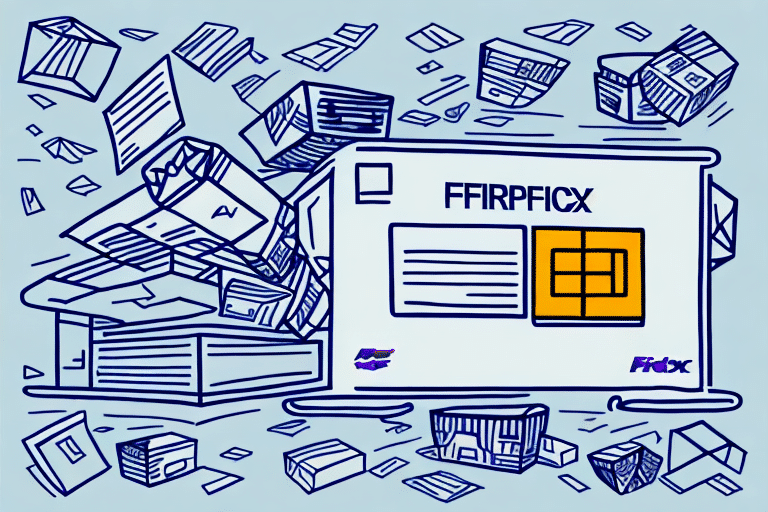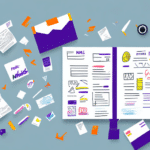How to Ship Hazardous Materials Using FedEx Ship Manager
Shipping hazardous materials requires a thorough understanding of the regulations set forth by authoritative bodies to ensure safety and compliance. The United States Department of Transportation (DOT) and the International Air Transport Association (IATA) have established stringent guidelines that must be adhered to during the transportation of hazardous materials. As a global leader in shipping, FedEx provides comprehensive services designed to comply with these regulations. This guide outlines the steps and best practices for shipping hazardous materials using FedEx Ship Manager:
Understanding Regulations for Shipping Hazardous Materials
Compliance with DOT and IATA regulations is paramount when shipping hazardous materials. These regulations are designed to ensure the safety of transportation, protect the environment, and maintain public health. Key aspects of these regulations include:
- Classification: Hazardous materials must be accurately classified based on their properties and potential risks.
- Packaging: Proper packaging is essential to prevent leaks, spills, and other incidents during transit.
- Labeling and Marking: All packages must be appropriately labeled and marked to indicate the nature of the hazardous materials inside.
- Documentation: Accurate documentation must accompany shipments, detailing the type and quantity of hazardous materials.
Failure to comply with these regulations can result in severe consequences, including fines, legal action, and environmental damage. It's crucial to consult with regulatory authorities such as the DOT's Hazardous Materials Division and review the latest IATA Dangerous Goods Regulations to ensure compliance.
Proper Packaging and Labeling
Proper packaging is a cornerstone of safe hazardous material shipping. FedEx offers specialized packaging solutions designed to meet regulatory standards, including:
- Certified Containers: Containers that meet specific performance standards to contain hazardous materials securely.
- Secondary Packaging: Additional layers of packaging to provide extra protection against leaks and spills.
- Labeling: Clear and durable labels indicating the hazards associated with the materials.
Selecting the appropriate packaging depends on the type and classification of the hazardous material being shipped. Refer to the FedEx Packaging Guidelines for detailed information on selecting the right packaging materials.
FedEx’s Hazardous Materials Shipping Guidelines
FedEx Ship Manager provides a detailed guide to navigating the complexities of shipping hazardous materials. Key components of the FedEx guidelines include:
- Preparation and Documentation: Step-by-step instructions for preparing shipments and completing necessary documentation.
- Prohibited and Restricted Materials: A comprehensive list of materials that cannot be shipped or require special permissions.
- Emergency Procedures: Protocols to follow in the event of an incident during transportation.
These guidelines are designed to help shippers comply with both federal and international regulations. For the most current information, consult the FedEx Hazardous Materials Shipping page and coordinate with relevant regulatory agencies.
Benefits of Using FedEx Ship Manager for Hazardous Material Shipments
Opting for FedEx Ship Manager offers several advantages for shippers handling hazardous materials:
- Streamlined Processes: Simplifies the preparation and documentation of hazardous material shipments, reducing the risk of errors.
- Reputable Carrier: Trust in FedEx’s extensive experience and reliability in handling sensitive and regulated shipments.
- Comprehensive Tracking: Real-time tracking capabilities allow shippers to monitor the status of their shipments at every stage.
- Specialized Training: FedEx provides training resources to ensure that shippers are knowledgeable about regulatory requirements and best practices.
- Versatile Packaging Options: Access to a variety of packaging solutions tailored for different types of hazardous materials.
These benefits contribute to safer shipments, regulatory compliance, and peace of mind for businesses shipping hazardous materials.
Step-by-Step Guide to Shipping Hazardous Materials
Follow these steps to successfully ship hazardous materials using FedEx Ship Manager:
- Classification: Determine the correct classification of your hazardous material in accordance with DOT and IATA regulations.
- Select Packaging: Choose the appropriate packaging that complies with regulatory standards and is suitable for the material being shipped.
- Labeling and Marking: Apply the necessary labels and markings to your package to clearly indicate the hazards.
- Documentation: Complete all required forms, including the Dangerous Goods Declaration.
- Create Shipping Label: Use FedEx Ship Manager to generate a shipping label and schedule a pickup.
- Prepare Shipment: Securely package your materials, ensuring all labels and documents are accurately placed.
- Pickup and Transportation: Brief the carrier or driver about the hazardous material shipment and provide all necessary documentation.
- Track Shipment: Utilize FedEx’s tracking system to monitor the progress and status of your shipment.
Ensure that all steps are meticulously followed to maintain compliance and safety throughout the shipping process.
Tips for Ensuring Safe and Successful Delivery
Implement the following best practices to enhance the safety and success of your hazardous material shipments:
- Accurate Labeling: Double-check that all labels and markings are correctly applied and legible.
- Proper Documentation: Ensure all required documents are complete, accurate, and securely attached to the shipment.
- Employee Training: Provide comprehensive training to employees involved in handling and shipping hazardous materials.
- Emergency Preparedness: Develop and communicate contingency plans for potential incidents during transportation.
- Regular Audits: Conduct periodic reviews of your shipping processes to identify and rectify compliance gaps.
By adhering to these tips, shippers can minimize risks and ensure that hazardous materials are delivered safely and efficiently.
Tracking Your Hazardous Material Shipment with FedEx Ship Manager
FedEx offers robust tracking capabilities for hazardous material shipments through FedEx Ship Manager. Features include:
- Real-Time Updates: Access current status information on your shipment at any time.
- Notifications: Receive automatic updates via email or text about key milestones in your shipment’s journey.
- Detailed Reports: Generate comprehensive reports to review shipping performance and compliance.
To track your shipment, simply enter your tracking number on the FedEx Tracking page. For assistance, contact FedEx’s Customer Support.
Common Mistakes to Avoid When Shipping Hazardous Materials
To ensure compliance and safety, avoid the following common mistakes when shipping hazardous materials with FedEx:
- Incorrect Classification: Misclassifying materials can lead to regulatory violations and shipment delays.
- Improper Packaging: Using unsuitable packaging increases the risk of leaks and accidents.
- Incomplete Documentation: Missing or inaccurate forms can result in shipment rejection and fines.
- Incorrect Labeling: Failing to properly label shipments can cause confusion and safety hazards.
- Lack of Communication: Not briefing carriers or drivers about the hazardous nature of the shipment can jeopardize safety.
By proactively addressing these areas, shippers can enhance the safety, efficiency, and compliance of their hazardous material shipments.
Conclusion
Shipping hazardous materials safely and in compliance with regulations is a complex but manageable process. Utilizing FedEx Ship Manager provides shippers with the tools and resources necessary to navigate regulatory requirements, ensure proper packaging and labeling, and monitor shipments effectively. By following the guidelines and best practices outlined in this guide, businesses can confidently manage their hazardous material shipments, minimizing risks and ensuring successful delivery.








